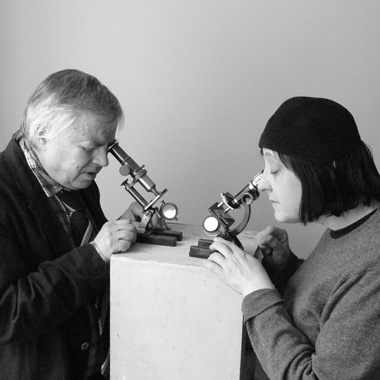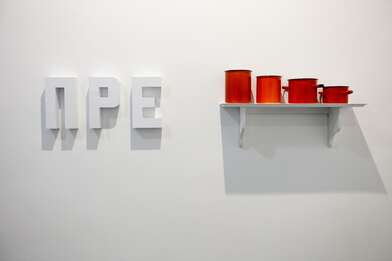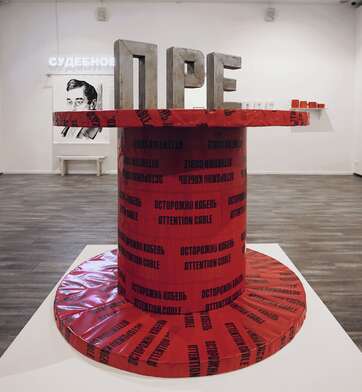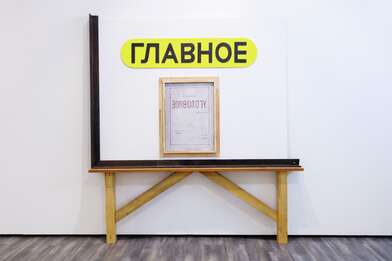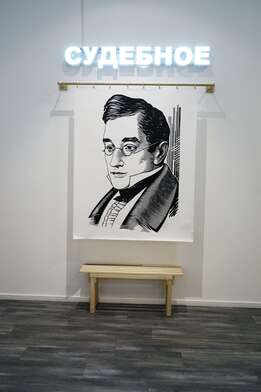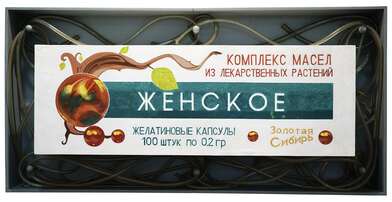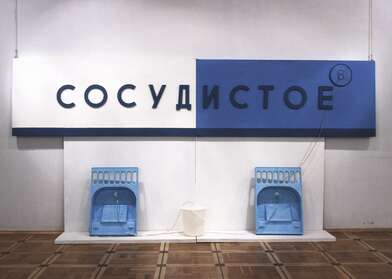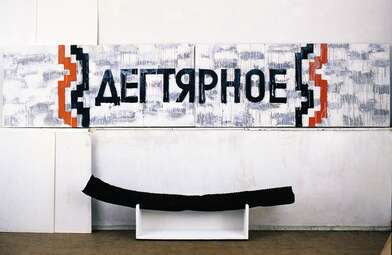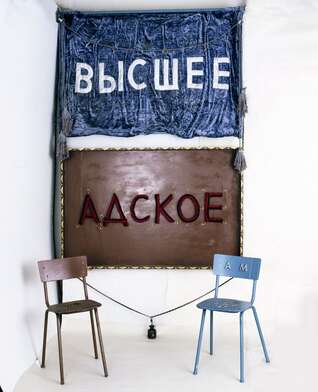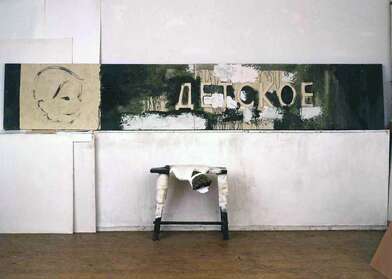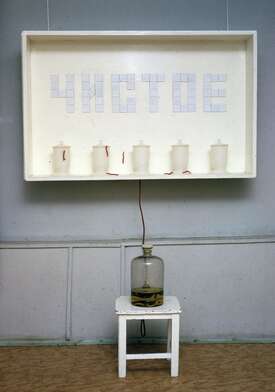Neuter Objects
On Elena Elagina's Installations
The installations made by Elagina in the late 1980s, the ones whose titles all consisted of a single adjective, impressed me more than anything else being made in our circle at the time. She was a kind of autochthonous Soviet Haim Steinbach, a genuine Soviet simulation artist, centring not on the object (as with Steinbach and other Western simulationists) but on the word, in full accordance with our logocentric consciousness and culture. Elagina’s installations were therefore completely accurate and exceptionally contemporary in terms of international art, forming a crucial stage in the history of Moscow conceptualism. In their significance, they are comparable to Kabakov’s works from the early 1970s, one of which (an album) features words such as “Carrot,” “Cloud,” or “Sky” written on blank sheets of paper. With Elagina, we see the development of this line of logocentric readymade in the form of installation. Like all successful and authentic works, these installations are ambiguous and leave open a semantic gap: they always contain an irreducible residual meaning not covered by any interpretation (especially because of the plastic solution). The final sense eludes the viewer. Let us consider two of the works whose titles are adjectives: Sosudistoe (“Vascular”) and Degtyarnoe (“Tar-Based”). These appear as metaphysical altars of sorts, and at the same time as a Soviet showcase with some heart medicine and soap [tar soap was a staple in Soviet bathrooms]. The strong suggestive gesture becomes critical through its absurdity. The plastic work suggests not so much bottles of Corvalol medicine or bars of soap but rather factories for their production, not a particular product but the process of making it. The works resemble exhibition stands at the Soviet Exhibition of National Economic Achievements or, indeed, entire pavilions dedicated to a particular industry, such as heart medicine or soap: Children’s (the title of another installation) or Tar-Based (with a capital letter!). Absurdist metaphysics are expressed through an increase in verbal objectivity (a small bottle or a bar of soap or fragments of the same are magnified to a comparatively giant size). These works by Elagina remain relevant, because even now (in a different era, it would seem) what matters to our consciousness is not the usability of the object but its name; not the thing but the word.
Andrei Monastyrski


